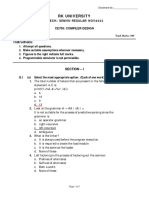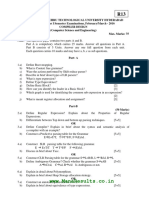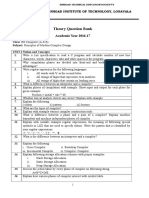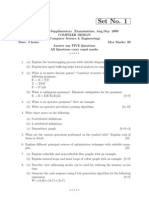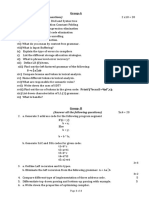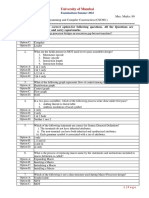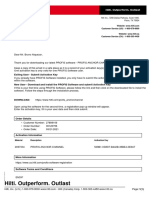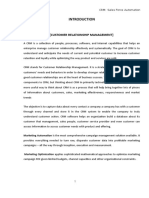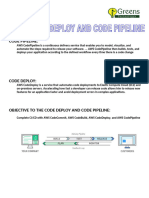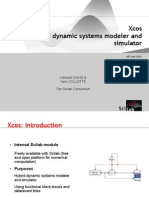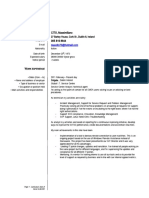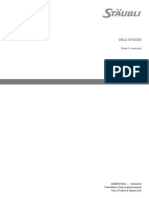0% found this document useful (0 votes)
27 views3 pagesCompiler Design
This document is an examination paper for the Compiler Design course, consisting of 6 questions with a total of 60 marks. It includes multiple-choice questions, short answer questions, and longer explanation prompts related to compiler concepts, grammar, code optimization, and data flow analysis. The exam is designed for B.Sc. Computer Science students and has a duration of 3 hours.
Uploaded by
kunaltomarmu26Copyright
© © All Rights Reserved
We take content rights seriously. If you suspect this is your content, claim it here.
Available Formats
Download as PDF, TXT or read online on Scribd
0% found this document useful (0 votes)
27 views3 pagesCompiler Design
This document is an examination paper for the Compiler Design course, consisting of 6 questions with a total of 60 marks. It includes multiple-choice questions, short answer questions, and longer explanation prompts related to compiler concepts, grammar, code optimization, and data flow analysis. The exam is designed for B.Sc. Computer Science students and has a duration of 3 hours.
Uploaded by
kunaltomarmu26Copyright
© © All Rights Reserved
We take content rights seriously. If you suspect this is your content, claim it here.
Available Formats
Download as PDF, TXT or read online on Scribd
/ 3







